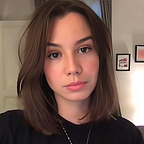Interviewing for a solo designer role
This article was initially posted back in April 2023 on my newsletter for Solo designers, founding designers, and design team of one: ctrlalt.club 💯
The first time you apply at a startup looking for its first designer, especially if you’ve researched the classic hiring process, looked at videos on how to present a case study… you might be surprised because startups love nothing more than to break the rules.
I speak from experience, having interviewed at FB, Google, and companies past the startup stage. I’ve flown to other countries to do whiteboard exercises. I’ve toured campuses and had lunches with employees to get the vibe.
But at startups… the process was not even close. Even though I came prepared (when I was aware that it was an interview), I rarely had the chance to present a case study. More often than not, I directly talked to the founders, was given an ongoing problem, and they’d look at me, expecting some magic trick.
So, how do you land a job as a first designer?
1. Build your network
Most startups under 50 employees don’t have recruiters in-house. They rarely pay to promote job listings for designers… but they might contact you directly if they know you exist. And if you apply, knowing someone who already works there can help you get hired.
💡 Put yourself out there
- Show your work on popular platforms like Twitter, Instagram, or LinkedIn that are NOT for designers only.
- Engage with founders, engineers, and other product people so they’ll think about you when it’s time to hire a designer.
2. Adapt to the situation
Interviewing can be very long at tech companies. It tends to be shorter at startups, but it can vary significantly from one startup to another. So be flexible and see this as part of the exercises: when you are a design team of one, you are expected to adapt and move fast.
💡 Be ready but flexible
- Have work ready to show: update your online portfolio regularly or keep a deck of your work ready to be shared.
- Know the impact of your work: how you increased conversion rate, or how you improved cross-functional collaboration within an org…
- Don’t rehearse a speech; you might get destabilized if you end up in a situation you weren’t expecting.
3. Know your interviewers
If you only have time to do one thing before the interview: research the founders. Finding information about new companies may be difficult, but you can usually find info about the founders.
💡 Research before you interview
- Search the founders online. What do they post on social media? Do your values align with theirs?
- Research the mission and tech. Who else is making similar things? How are they doing things differently?
- Do they already work with designers? Are they designers themselves?
4. Interview the company
Before investing too much time and effort, ask yourself some questions. Being the only designer on a team you don’t like, and working for a mission you don’t believe in is a sure way to burn out and prevent you from finding a job you actually like.
💡 Ask the right questions
- Did you feel energized after your conversation with the interviewers?
- Did you feel inspired by the mission and have questions or ideas?
- Do you see yourself working there for 12, 24, or 36 months?
- Did anyone make you feel uncomfortable during the interviews?
Additionally, if you need to find a job now because you don’t have a choice:
- Apply to companies with designer(s) already on the team to share the workload.
- Don’t hesitate to ask them if they are leaving!
If you join a company you don’t believe in as the only designer, you might not have enough energy left to find a better job.
5. The job description is a starting point
There is a reason why we say “design team of one.” The work ranges from UI/UX to branding, research, copywriting, prototyping, illustrations, motion design, code, product management, or even decorating the office… If you’re a generalist and like wearing multiple hats, the job is for you.
💡 Leverage your skills, curiosity, and hobbies
- Mention what you can do outside of the job description that you’d like to do at work.
- Use your side projects to your advantage during the interviews. They usually display your best non-design skills.
TL;DR
The hiring process for solo designers differs from what you usually find online. Forget the recruiter’s screen call, the 1-hour case study, and the whiteboard exercise:
- Skip the detailed case studies and polished speeches. Instead, be ready to discuss metrics and user feedback alongside your design work as you’d do during a conversation with someone who isn’t a designer.
- Have an honest discussion with your interviewer. You’re interviewing them as much as they are interviewing you.
- Research the founders, the mission, and the tech. Try to understand the vocabulary of the people you’ll be talking to.
- Be aware of what you’re getting into: it’s called “design team of one” for a reason. And if you’re not entirely interested in that job, it might prevent you from finding something you truly like.
For more articles and resources for Solo and Founding Designers, take a look at ctrlalt.club
